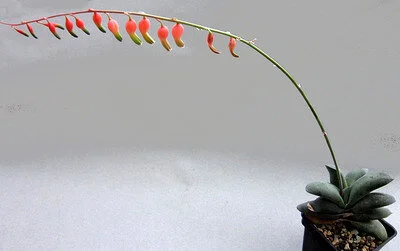gOT PLANT QUESTIONS?
We hope you find this page a helpful place to ask your plant related questions, request how-to tutorials, as well as your favorite plants to feature. I am excited to be offering this service to you all, sharing our love for plants and plant wisdoms!
ask me anything!
Hi I’m Rachael
I’m the creator & owner of INFINITE SUCCULENT, a plant art styling and educational service in San Diego, CA.
Through my plant art and styling services, as well as my workshops, I connect and engage my clients with the natural world, while helping them achieve the botanical atmosphere of their dreams!
PLANTS OF THE MONTH:
SPOTLIGHT ON:
gasteria Succulents
all about the gasteria succulents
Gasteria are a grouping of succulent plants related most closely to aloe and haworthia. As such they make a great option for low light and interior plantscaping.
Native to South Africa, these low and slow growing plants tend to have rough and bumpy leaves that are flattened and stiff. The shape and texture of their leaves inspired their common name of “Ox tongue”. Gasteria also readily propagate by shooting off little pups (“offshoots”), creating lovely clusters in gardens and arrangements.
The name Gasteria comes from the Latin word of “gaster” which means stomach. Apparently, whoever got to name this genus believed that the shapes of the blooms from these little plants resembled a stomach, hence the name Gasteria. The blooms are quite beautiful – shooting off from near the center of the plant in a arcing graceful line that can extend over a foot! Dainty pink bulbs with green tips grow from the end of the bloom stalk, hanging downward like little bells, and in my opinion resembling sleeping flamingos! If it was me naming this genus of plants (and what an honor that would be!) instead of Gasteria, these hardy little plants would be called “Flamingoria”!
caring for your gasteria
Light:
These are one of my favorites types of succulents to use for open terrariums and indoor arrangements as they thrive in the lower light conditions found in most of our homes and workspaces. In brighter conditions they will often take on reddish hues on the edges of their leaves. Be cautious if moving a gasteria from low light to brighter light as to avoid sunburning the leaves!
Water:
Happy green Gasteria enjoying their terrarium home
Same with most succulents – water thoroughly and allow to dry before next watering and always plant in well draining soil (EB Stone Succulent & Cactus Blend is one of my personal favorites!). In arrangements they do well with a pebble or pumice top dressing as this allows access water to be more easily evaporated. In my experience these plants really do not need to be fertilized, but if you want to fertilize the best time to do so would be once in the early spring, which is when they are most likely to come out of dormancy and begin their growth cycles again.
Gasteria “little warty”
thanks for reading and please reach out with any questions.
With gratitude,
Rachael
sources:
Debra Baldwin “Succulents Simplified” Timber Press, 2013.
LOOKING TO ADD MORE SUCCULENTS TO YOUR COLLECTION? PUSH THE BUTTON BELOW TO SEE THE GORGEOUS SUCCULENT VARIETIES AVAILABLE!
SOURCES:










